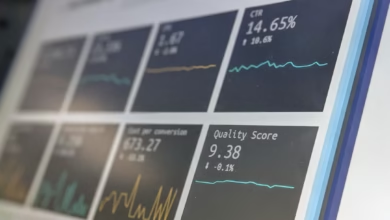Mastering Day Trading: Essential Strategies, Tools, and Techniques for Beginners

In the fast-paced world of financial markets, day trading has emerged as an attractive avenue for individuals seeking to capitalize on short-term price movements. For beginners, this dynamic approach can seem daunting, filled with complexities and risks. However, with the right strategies and knowledge, aspiring traders can navigate the market with confidence. This article serves as a comprehensive guide for newcomers, covering essential day trading strategies, the critical role of technical analysis in predicting market movements, and the importance of risk management techniques to minimize losses. We will also delve into the psychology of trading, exploring how emotions can influence decision-making, and examine the transformative impact of algorithmic trading on the landscape. Additionally, we will highlight swing trading strategies for capturing short-term trends and discuss how news events can sway intraday trading. Finally, we will introduce essential tools and platforms that can aid in successful online trading. Whether you’re looking to enhance your trading skills or embark on a new financial journey, this guide will equip you with the foundational knowledge needed to thrive in the world of day trading.
- 1. **Essential Day Trading Strategies: A Beginner's Guide to Success**
- 2. **Navigating Market Movements: The Role of Technical Analysis in Day Trading**
1. **Essential Day Trading Strategies: A Beginner's Guide to Success**
Day trading can be an exciting yet challenging endeavor for beginners. Understanding essential strategies is crucial for achieving success in this fast-paced environment. Here are some foundational strategies to help you get started:
1. **Scalping**: This strategy involves making numerous trades throughout the day to capture small price movements. Scalpers often hold positions for seconds to minutes, aiming for small profits that can accumulate over time. Successful scalping requires a firm grasp of market dynamics and quick decision-making skills.
2. **Momentum Trading**: Momentum traders capitalize on stocks that are moving significantly in one direction on high volume. They identify trends and enter trades with the expectation that the momentum will continue. This strategy emphasizes the importance of timing and requires traders to monitor news, events, and market sentiment closely.
3. **Reversal Trading**: This strategy focuses on identifying points where a stock's price is likely to change direction. Traders look for overbought or oversold conditions using indicators like the Relative Strength Index (RSI) or moving averages. Successful reversal trading requires strong analytical skills and a good understanding of market cycles.
4. **Range Trading**: Range traders identify key support and resistance levels and trade within these boundaries. By buying at support and selling at resistance, traders can capitalize on price oscillations. This strategy works best in a sideways market where stocks fluctuate within a defined range.
5. **News-Based Trading**: Many traders leverage significant news or earnings reports to capitalize on sudden price movements. This strategy requires staying informed about market news and understanding how different events can impact stock prices. Quick reactions and sound judgment are essential to make the most of this approach.
6. **Technical Analysis**: Utilizing charts and indicators is vital for day traders. Developing skills in technical analysis helps traders identify patterns, trends, and potential entry and exit points. Popular indicators include moving averages, Bollinger Bands, and Fibonacci retracements.
7. **Trading Plan**: A clear trading plan is essential for success. This should outline your goals, strategies, risk tolerance, and rules for entering and exiting trades. Consistently following a well-defined plan helps mitigate impulsive decisions driven by emotions.
For beginners, it’s important to practice these strategies in a simulated environment before committing real capital. By combining sound strategies with disciplined risk management, new traders can navigate the complexities of day trading more effectively.
Day trading can be an exciting but challenging venture for beginners looking to capitalize on short-term market movements. A solid understanding of various strategies and concepts is essential for success in this fast-paced environment.
Technical analysis plays a crucial role in predicting market movements. By analyzing historical price data, chart patterns, and technical indicators, traders can make informed decisions about entry and exit points. Tools such as moving averages, relative strength index (RSI), and candlestick patterns help traders identify trends and potential reversals, allowing them to act quickly in the dynamic market landscape.
Risk management is paramount in trading, particularly for beginners who may be more susceptible to emotional decision-making. Techniques such as setting stop-loss orders, diversifying investments, and only risking a small percentage of capital on any single trade can help minimize losses. Establishing a risk-to-reward ratio before entering a trade allows traders to evaluate potential profits against possible losses, fostering a disciplined approach to trading.
The psychology of trading significantly impacts decision-making. Emotions such as fear and greed can lead to impulsive actions, causing traders to deviate from their strategies. Developing a trading plan and sticking to it, regardless of market fluctuations, can help mitigate emotional responses. Additionally, keeping a trading journal to reflect on past trades can provide insights into emotional triggers and improve future performance.
Algorithmic trading has transformed the landscape by utilizing bots to execute trades based on predefined criteria. These automated systems can analyze vast amounts of data and react to market changes much faster than human traders. For beginners, understanding the fundamentals of algorithmic trading can provide a competitive edge, as they explore platforms that offer these capabilities.
Swing trading strategies allow traders to capture short-term market trends, typically holding positions for several days to weeks. This approach requires a keen eye for identifying price swings and trends, often using technical analysis similar to day trading but on a slightly longer time frame. Swing traders can benefit from both upward and downward movements in the market, making this strategy versatile for various market conditions.
The impact of news and events on intraday trading cannot be overstated. Economic indicators, earnings reports, and geopolitical developments can cause significant volatility. Staying informed about upcoming events and understanding their potential implications can help traders make timely decisions. Utilizing economic calendars and news feeds can enhance a trader's ability to react to market-moving information effectively.
Finally, the right tools and platforms are essential for successful online trading. Many brokers offer user-friendly interfaces, real-time data, and advanced charting tools. Beginners should choose platforms that cater to their trading style and provide educational resources to facilitate learning. Demo accounts can also be invaluable for practicing strategies without risking real capital.
In summary, starting in day trading requires a blend of technical analysis, risk management, psychological awareness, and the right tools. By understanding these elements, beginners can build a solid foundation for navigating the complexities of the trading world.
2. **Navigating Market Movements: The Role of Technical Analysis in Day Trading**
Technical analysis is a crucial component of day trading, providing traders with the tools and insights necessary to navigate the often volatile movements of the market. By analyzing historical price data and trading volumes, technical analysis helps traders identify patterns and trends that can inform their decision-making.
One of the primary tools used in technical analysis is charting, which visually represents price movements over time. Traders commonly utilize various chart types, such as line charts, bar charts, and candlestick charts, to gain different perspectives on market behavior. Candlestick charts, in particular, are favored for their ability to convey information about price action within specific time frames, offering insights into market sentiment.
Indicators play a significant role in technical analysis by providing quantifiable data that can signal potential entry and exit points. Common indicators include moving averages, Relative Strength Index (RSI), and Bollinger Bands. Moving averages help smooth out price data to identify trends, while the RSI can indicate overbought or oversold conditions, aiding traders in making informed decisions about when to buy or sell.
Moreover, technical analysis emphasizes the importance of support and resistance levels—key price points where the market has previously reversed direction. Recognizing these levels allows traders to set strategic entry and exit points, as well as to establish stop-loss orders to manage risk.
While technical analysis is a powerful tool, it is essential for traders to combine it with a solid understanding of market fundamentals and current events. The interplay between technical signals and broader market context can enhance the effectiveness of trading strategies, enabling traders to make informed decisions amidst rapid market changes.
In summary, mastering technical analysis equips day traders with the insights needed to anticipate market movements, identify trading opportunities, and establish risk management strategies. By leveraging these analytical tools, beginners can build a strong foundation for successful day trading.
In conclusion, embarking on a day trading journey requires a well-rounded understanding of various strategies and tools that can significantly influence success. By grasping essential day trading strategies, beginners can develop a framework to navigate the complexities of the market. Technical analysis serves as a critical component in predicting market movements, enabling traders to make informed decisions based on historical data and trends.
Moreover, mastering risk management techniques is imperative for minimizing losses and protecting capital in a volatile trading environment. The psychological aspects of trading cannot be overlooked; emotions often play a pivotal role in decision-making and can lead to impulsive actions if not managed effectively.
As technology continues to evolve, algorithmic trading is reshaping the landscape, providing traders with advanced tools to enhance their strategies. Additionally, understanding the impact of news and events on intraday trading is essential for adapting to market shifts in real-time.
Finally, utilizing the right tools and platforms can make a significant difference in trading efficiency and success. By combining these elements—strategy, analysis, risk management, psychology, technology, and tools—beginners can better equip themselves for the challenges of day trading and work towards achieving their financial goals. With dedication and continuous learning, aspiring traders can navigate the fast-paced world of day trading with confidence and skill.






